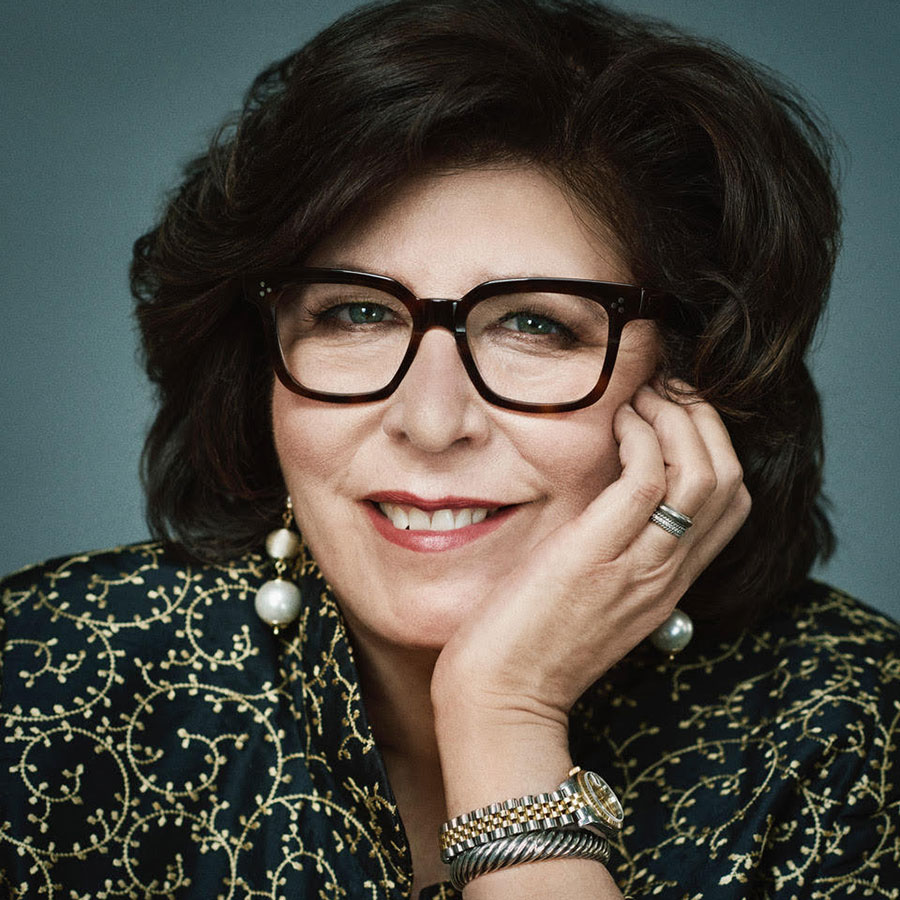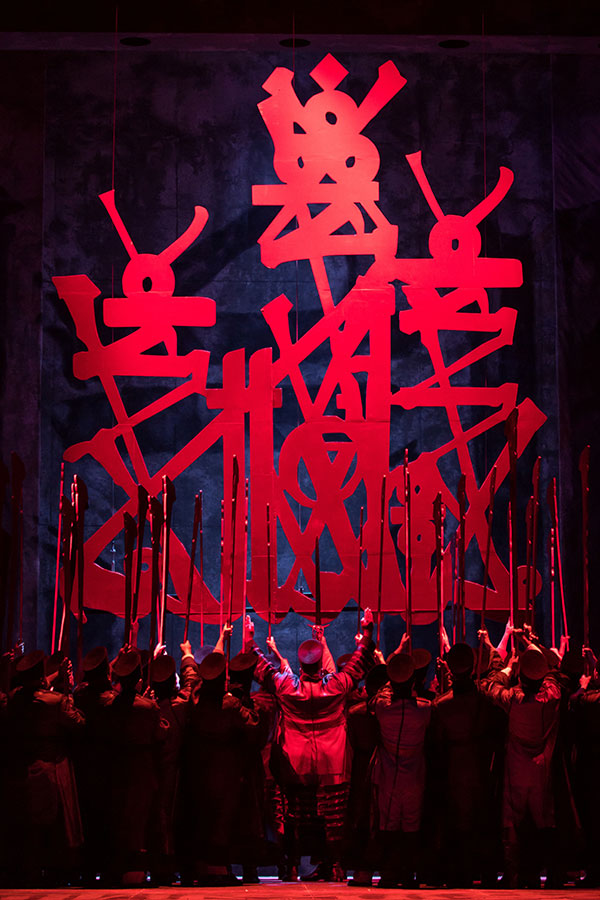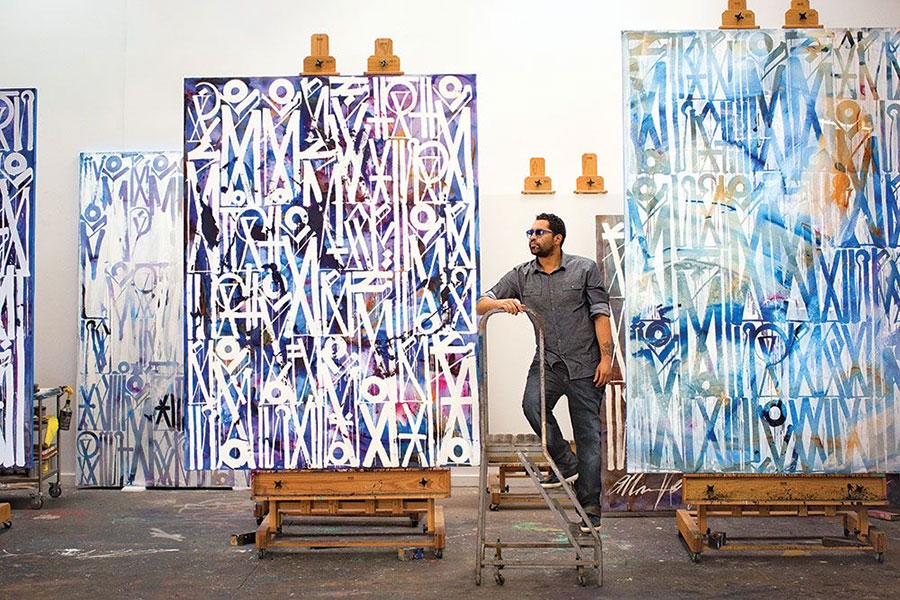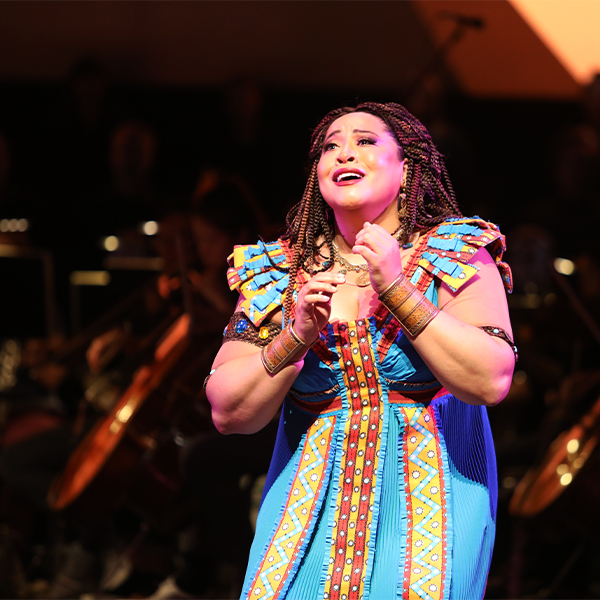February 20, 2024
AIDA, the chamber opera
Director's note by Francesca Zambello
As an opera lover, Aida is part of the fabric of my being. Like so many others, I first experienced it with huge forces, but as I have come to work on it many times as a director, I have realized it is a chamber piece with a huge triumphal scene parked in the middle of the powerful story about love and war. War is central to this piece, but it could be any two countries who relentlessly exert power over each other. Verdi set the opera in a distant time and place, but the heartbreak of war is never far away from us now. It is easy to dehumanize others with generic words like "foreigners," and in setting the work in a more abstracted location, I am intending to make a strong connection between our current vocabulary and this ancient story.
As a director, I know you need some spectacle, but what is crucial to me in this opera is to dig into the intimate scenes where the conflict of the four main characters drive the drama forward: Aida, the foreign slave in captivity; her father, Amonasro, the king of a neighboring country and a prisoner of war; Amneris, daughter of the King of Egypt; and Radamès, Egyptian warrior. All are caught in a love triangle and a bitter war between two neighboring countries. They each suffer a battle of their duty versus their desires.

The most famous scene of the opera, the triumphal scene following a battle, is where we think of the hordes and the elephants, but what is more powerful is to focus on the four individual dramas. There are very few moments when the characters of Aida sing solo pieces, but when they do we feel a struggle inside each of their introspective moments. With so few arias we are always experiencing the grand emotions of love and war through duets and trios. The story brilliantly sets the individuals and their passions against the context of a society out of their control. I call this the "duty versus desire" problem, something most people are always confronting. Here, though, the stakes are very high.
When we went to work on the designs we chose to collaborate with Marquis Lewis (aka RETNA). His work is inspired by calligraphy and hieroglyphics, using bold colors and shapes to evoke a mythic past with a contemporary edge. RETNA created a series of structural works, paintings, and images which set designer Micheal Yeargan turned into the theatrical spaces. With costume designer Anita Yavich we tried to compliment the power of RETNA's work with a rich color palette and costumes which felt derived from another time and yet in other ways seemed very current. The movement of the dance uses the language of war and religious ritual.

As I write this in the middle of the rehearsal process, I am still convinced Aida is a chamber opera. The protagonists and their complex and heart-rending personal traumas, set against the background of war and religious absolutism, make for a passionate Verdi score and drama. This opera lives in a world of emotions, of individuals faced with love, duty, jealousy, and hatred, individuals caught up in emotions they cannot master and that lead ultimately to a tragic conclusion. The ending, akin to Wagner's "Liebestod," joins Aida and Radamès in an ethereal death — the almost unbearably high cost of individuals trapped in a theater of war.
An unexpected foray into the world of opera
Designer's note by RETNA
I was in Miami one afternoon with a longtime art dealer of mine, Marsea Goldberg. She had just gotten off the phone with Francesca Zambello. Marsea was very excited and told me that the artistic director of the Washington National Opera had expressed interest in meeting with me about a possible collaboration for the opera Aida.

All of a sudden, the images of ancient Egypt coming to life onstage enveloped my mind. My past influences that I had seen in books, museums, and in my mind started to unravel visually. The honor and bewilderment that I felt knowing that my symbols had communicated the past and that I was now being asked to participate in Aida were just beyond me.
We ventured to Washington, D.C., to meet this ambassador of the arts, Francesca Zambello. I had no experience with opera, but I recalled moments in my childhood when I starred in a few plays and my excitement grew as I realized I was never far off my mark.
Having my artwork, much of which is based on the structure of Egyptian hieroglyphics, used for Aida turned my entire concept of my career full circle, marking a milestone in my career and artistic and spiritual development.

